ELAINE GAN
ABOUT
ELAINE GAN is interested in mapping worlds otherwise. Her transdisciplinary practice combines methods from art, science, and digital/environmental humanities to study the timing and temporal coordinations of more-than-human socialities. Through writing, drawing, interactive media, and installation, Gan explores historical materialisms and temporal coordinations that emerge between species, machines, and landscapes, with a particular interest in plants and fungi.
Gan is an artist-theorist and professor who teaches at Wesleyan University, Science in Society Program. She is co-editor of an interdisciplinary anthology, Arts of Living on a Damaged Planet: Ghosts and Monsters of the Anthropocene (Minnesota, 2017) and directs Multispecies Worldbuilding Lab, an experimental podcast about climate change. Her academic writing has been published in journals that include Environmental Philosophy, New Formations, Social Analysis, and Catalyst. Art projects have been exhibited internationally and have been funded by fellowships and grants from organizations including NYU Center for Humanities, USC Mellon Digital Humanities, University of California, New York Foundation for the Arts, Lower Manhattan Cultural Council, Jerome Foundation, and Aarhus University Research on the Anthropocene.
Gan is presently working on two multimodal research projects about crops: the first explores temporalities of multispecies interactions at the heart of historical and evolutionary change. It follows rice (Oryza sativa) as a flowering grass, companion species, and technoscientific seed. The second considers the extinction and transgenic revival of American chestnut trees (Castanea dentata) in eastern United States.
AFFILIATIONS
EDUCATION
CONTACT
RESEARCH INTERESTS
RECENT & UPCOMING ENGAGEMENTS
PROJECTS (click image to view)
-
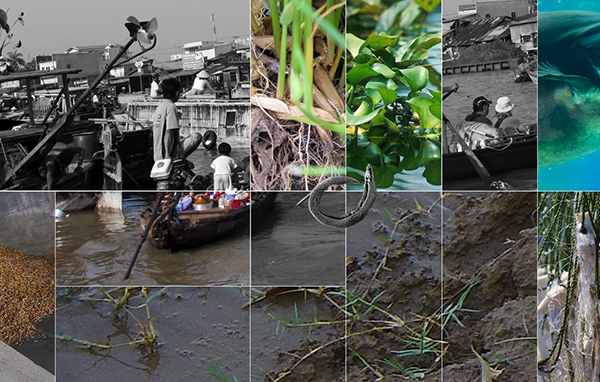
Time Machines, 2016 ongoing
A forthcoming book and digital project that follows the biogeochemical and technoscientific assemblages through which rice has come to matter as plant, machine, and data from the Holocene to the Anthropocene.
-
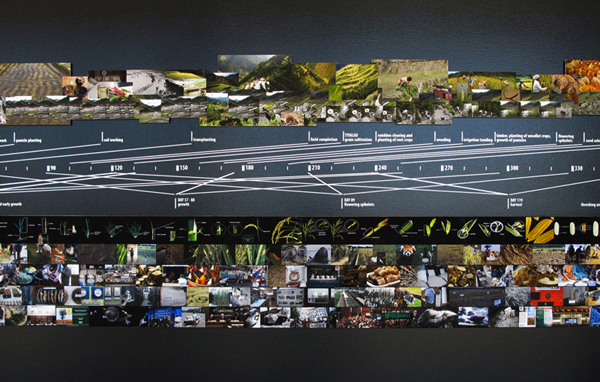
Rice Child (Stirrings), 2011 / 2014
An installation that experiments with mapping, narrating, and visualizing four modes of temporal entanglement. The cultivation of different rice varieties over 2,000 years is represented through unfolding events, materialities, durations, and inheritances. (UCSC; HMKV Germany; SLSA)
-

Chronometers for Time Travelers, 2011
Speculative timepieces or chronometers that render sensible transformations and potential synchronies of matter. (UCSC Digital Arts Research Center)
-
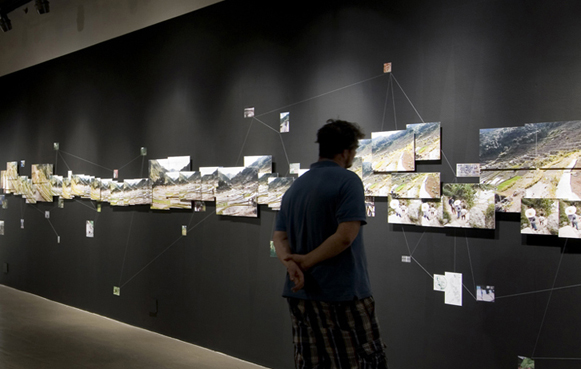
Considering Rice (Ifugao Terraces), 2010
Assemblage of prints maps a mountain province in Northern Luzon as dynamic multispecies constellation: animals, insects, plants, land, water, wind, rice seeds and local-urban-global mobilities. (Real Art Ways, CT)
Rice Assemblages and Time
These projects focus on rice and the assemblages of species, machines, and landscapes that make it one of the most valuable crops of the Anthropocene. Projects take the form of installations, speculative timepieces, drawings, digital images, and a book.
-
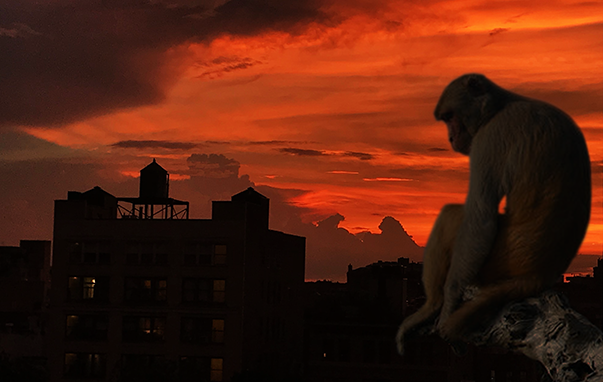
Multispecies Worldbuilding, 2020 ongoing
A podcast that combines interviews, field recordings, and experimental scores with scientists, artists, theorists, and activists who consider climate change and ecological crises from more-than-human perspectives.
-
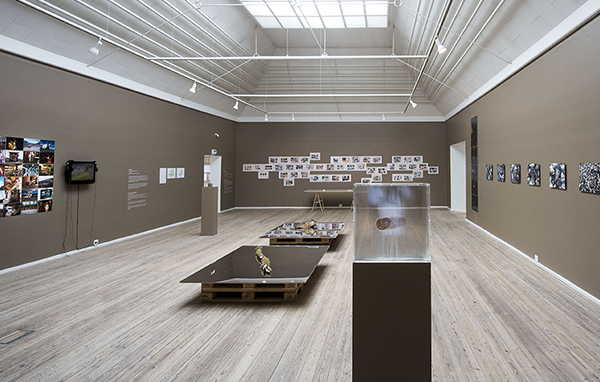
DUMP! Multispecies Making & Unmaking, 2015
An exhibition that brings together twenty research-driven practices from the arts, sciences, and humanities to render visible the collective making and unmaking of multispecies lives and landscapes in the Anthropocene. Co-curated with Steven Lam and Sarah Lookofsky. (Kunsthal Aarhus, Denmark)
-
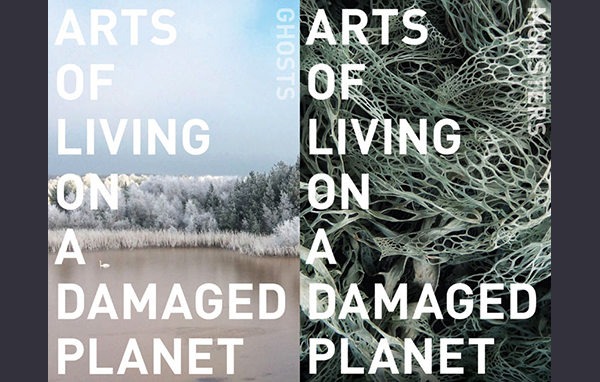
Arts of Living on a Damaged Planet:
Ghosts and Monsters of the Anthropocene, 2017As anthropogenic climate change threatens multispecies livability, this interdisciplinary anthology makes a bold proposal: entangled histories, situated storytelling, and thick descriptions offer tools for collaborative survival. Includes essays by scholars in anthropology, feminist science studies, ecology, bioinformatics, history, art, and literature (Univ of Minnesota Press, 2017).
Worldbuilding and Pedagogy
These are experiments in pedagogy, social engagement, and collective making. Projects aim to create transdisciplinary spaces using a broad range of media such as podcasts, exhibitions, workshops, screenings, and reading rooms.
-
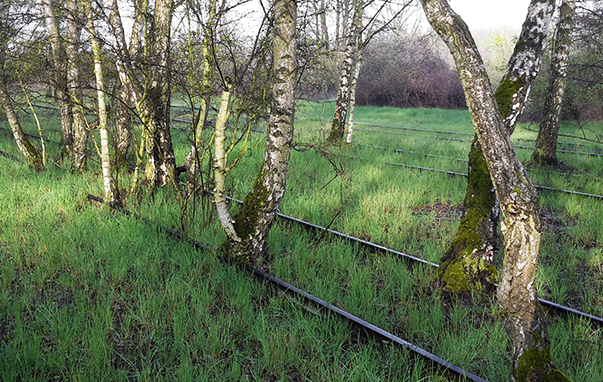
Feral Technologies, 2016-7
A seminar series and field visit to consider the Anthropocene through the lens of ferality, a more-than-human capacity for change and resurgence. Taking up HKW's focus on the Technosphere, we call for expanded critical attention to unruly multispecies lives and weedy postwar ecologies that exceed human technologies of control. (HKW, Berlin)
-
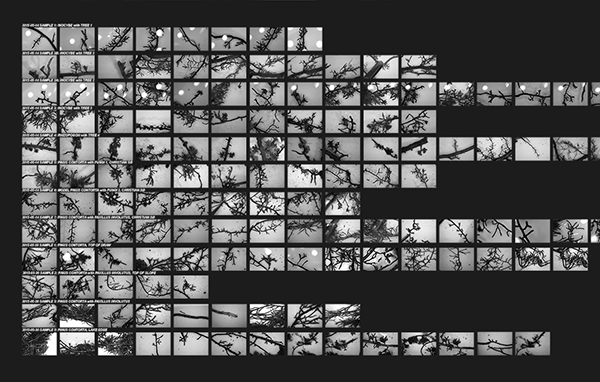
Landscape Change and Fungal Histories, 2015
An installation about aleatory encounters between mycorrhizal fungi and pine trees that constitute landscape changes in a former brown coal mining area in central Jutland. Based on collaborative research with Aarhus University Research on the Anthropocene/AURA. (Kunsthal Aarhus, Denmark)
-
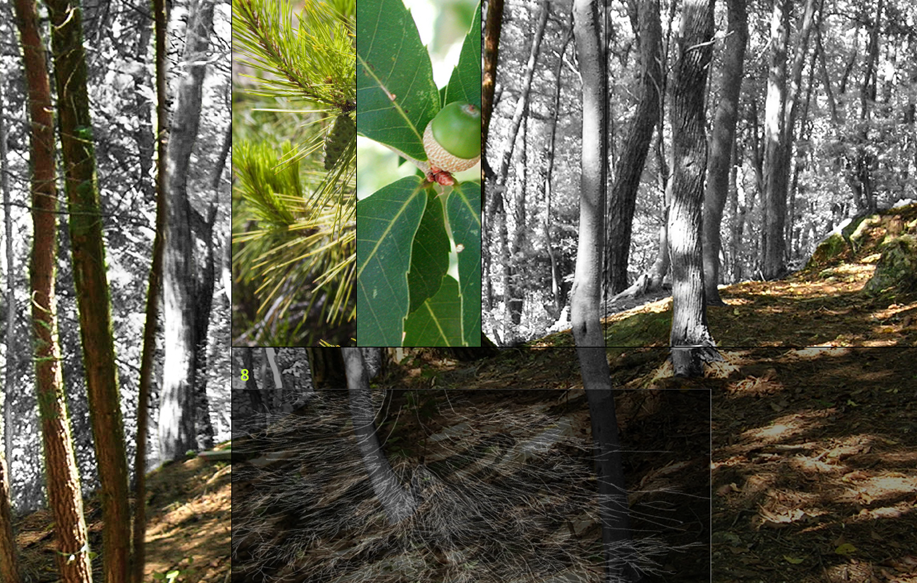
A Fungal Clock, 2012
A browser-based clock and interactive digital narrative that follows the multispecies temporalities through which matsutake mushrooms come alive in Japanese woodlands. Collaboration with Anna Tsing. (American Anthropological Association)
-
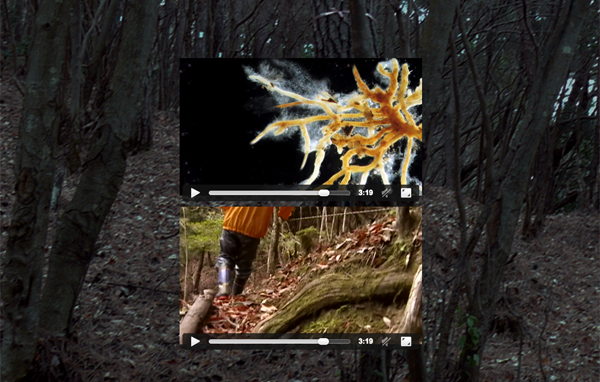
Fungal Time in a Satoyama Forest, 2013
Two-channel synchronized video installation to animate the movements of multispecies bodies (human and fungal) through a satoyama forest landscape in Japan. Collaboration with Anna Tsing. (Univ of Sydney)
-
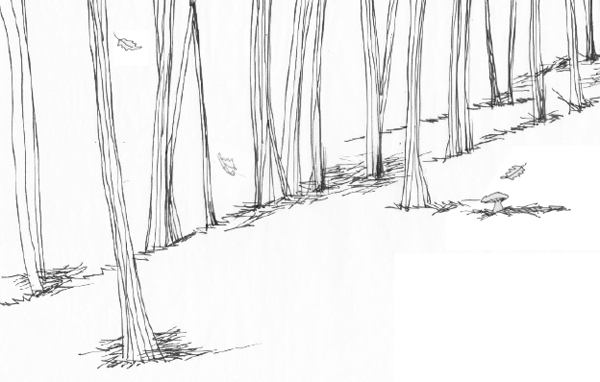
How Things Hold, 2019
Drawings for an essay about multispecies coordinations and histories from which wild matsutake mushrooms emerge. Collaboration with Matsutake Worlds Research Group.
Fungi and Forest Walks
These projects engage with fungi, forests, and the slow art/science of walking worlds otherwise. Through installations, performative walks, photography, specimen collections, and digital stories, these experiment with practices of multispecies attunement.
-
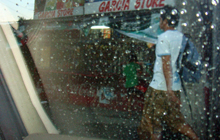
The Gamblers, 2009-10
Two-channel video: one presents a promotional video by NASA-CISCO, while the other presents footage of slums in the Philippines. For whom are "global solutions" proposed? (Spaces, OH)
-
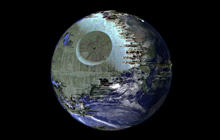
One World, One Dream, 2007-8
Earth transforms into a fully armored battle station in this remix of nonfictional NASA images and science fictional renderings of the Death Star.
-
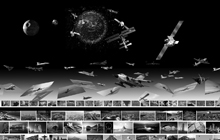
The Cosmopolitans, 2008-9
Web-sourced images are resampled and montaged as a form of cognitive mapping. The world is pictured vertically, from satellite space to subsurface extraction. (Toronto Free, ONT)
-
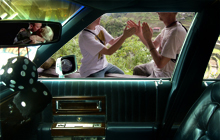
Fast Car, 2007-8
Digital montages composited from image and film fragments form an allegory about asynchronous and aleatory encounters. (Shifter ejournal)
-
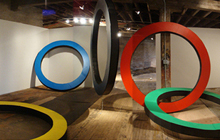
Waiting (Allegories of Capital), 2008
An installation that considers the Modern Olympiad and its host cities as historical constructions of a globalized culture industry. (Soap Factory, MN)
-
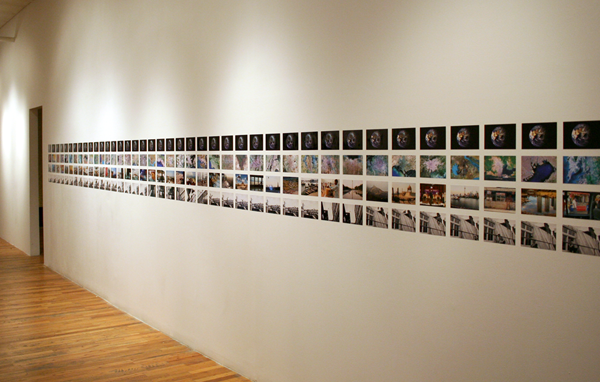
Partial Views From An Artist's Space, 2007
Two facing walls present different worldviews. Left: prints graphically narrate uneven and sclerotic impact of globalized flows. Right: single print of NASA's "Earth Rise", 1968. (Artists Space, NYC)
On/Against Globalization
Gallery installations and digital media projects that map and critique global-historical dis/connections and neoliberal dispossessions of land and labour (2007-10).
-
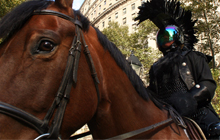
The Madness of George, 2007-8
Public performance that questions the transformations of collective space after 9/11. Two uniformed equestrians circle a 300-year-old fence that encloses NY's first public park. (LMCC/Bowling Green, NYC)
-
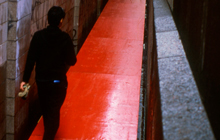
Walk On Red, 2004
A 152-foot walkway is built into an unnamed alley. An attempt to reconstruct a marginal and leftover space into an open social platform. (under the Manhattan Bridge, Brooklyn)
-
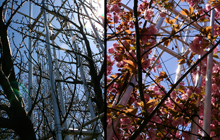
It's A Hard Knock Life, 2004
While appearing fixed, aluminum scaffolds are designed to expand with each tree's growth. An attempt to consider human-nonhuman architectural forms. (Socrates, LIC)
-
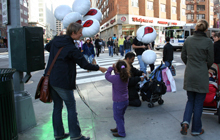
Whose Place Is It Anyway, 2009
Balloons marked with an "X" are given to pedestrians, who are encouraged to then pass them along, creating unmappable, unpredictable paths. (AiOP/Union Square, NYC)
-
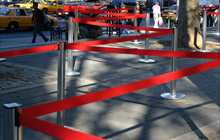
Crowd Control, 2005
Stanchions form a maze. Visitors create paths by interchanging red belts. Sociospatial control as a field for recomposition. (Sara Roosevelt Park, NYC)
-
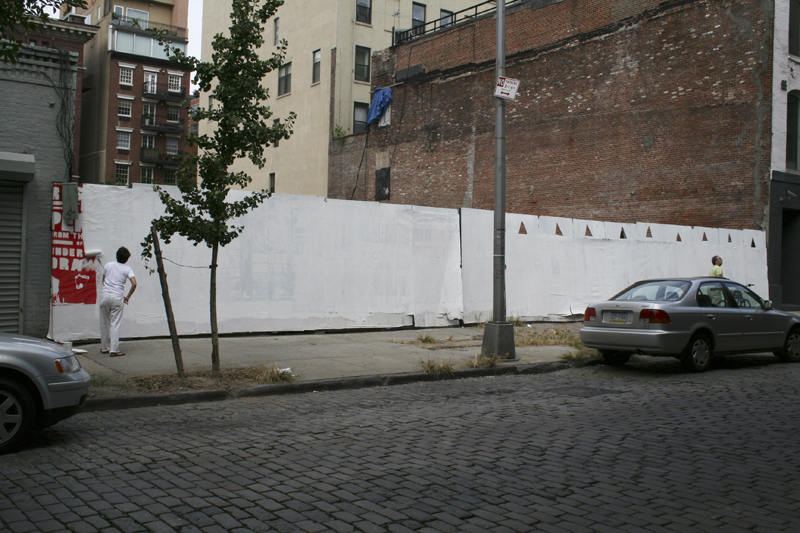
Witeout, 2006
Street posters are painted over to clear advertising messages blanketing city space. Painting is reclaimed as a public act of everyday resistance.
Site-Specific Works
Performative interventions and outdoor installations in public spaces to make visible sociopolitical exclusions and historical enclosures of the urban commons (2004-2009).